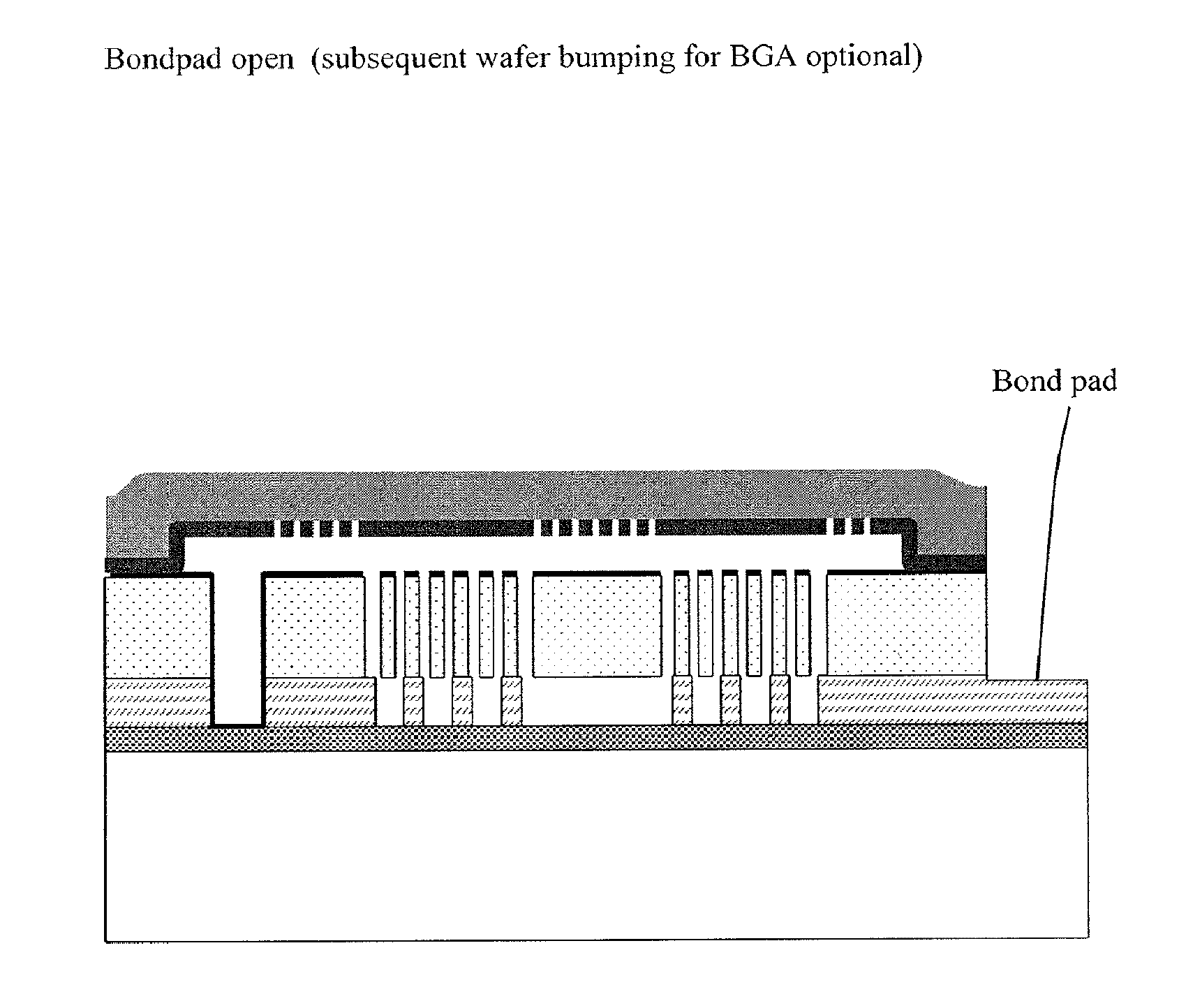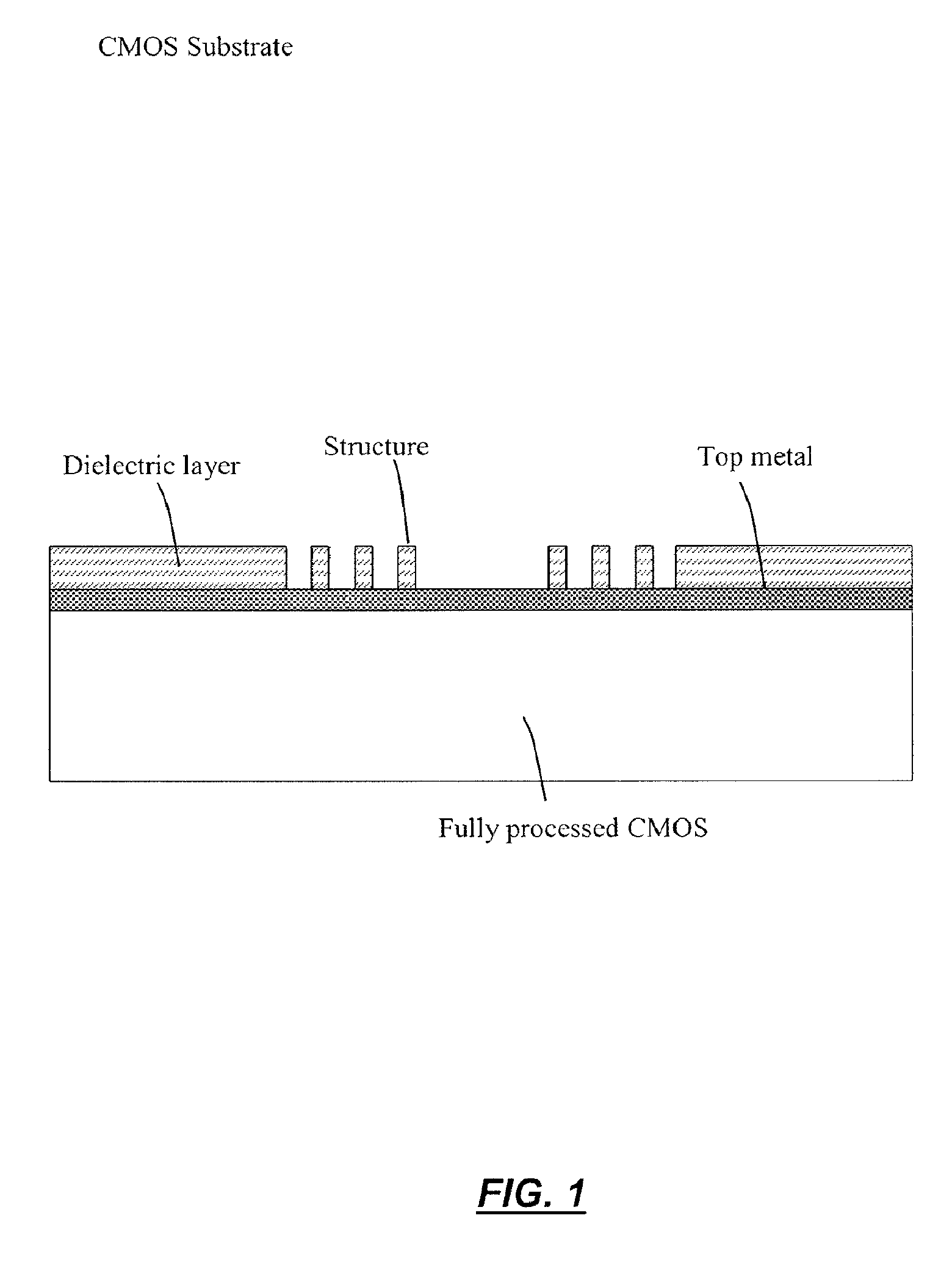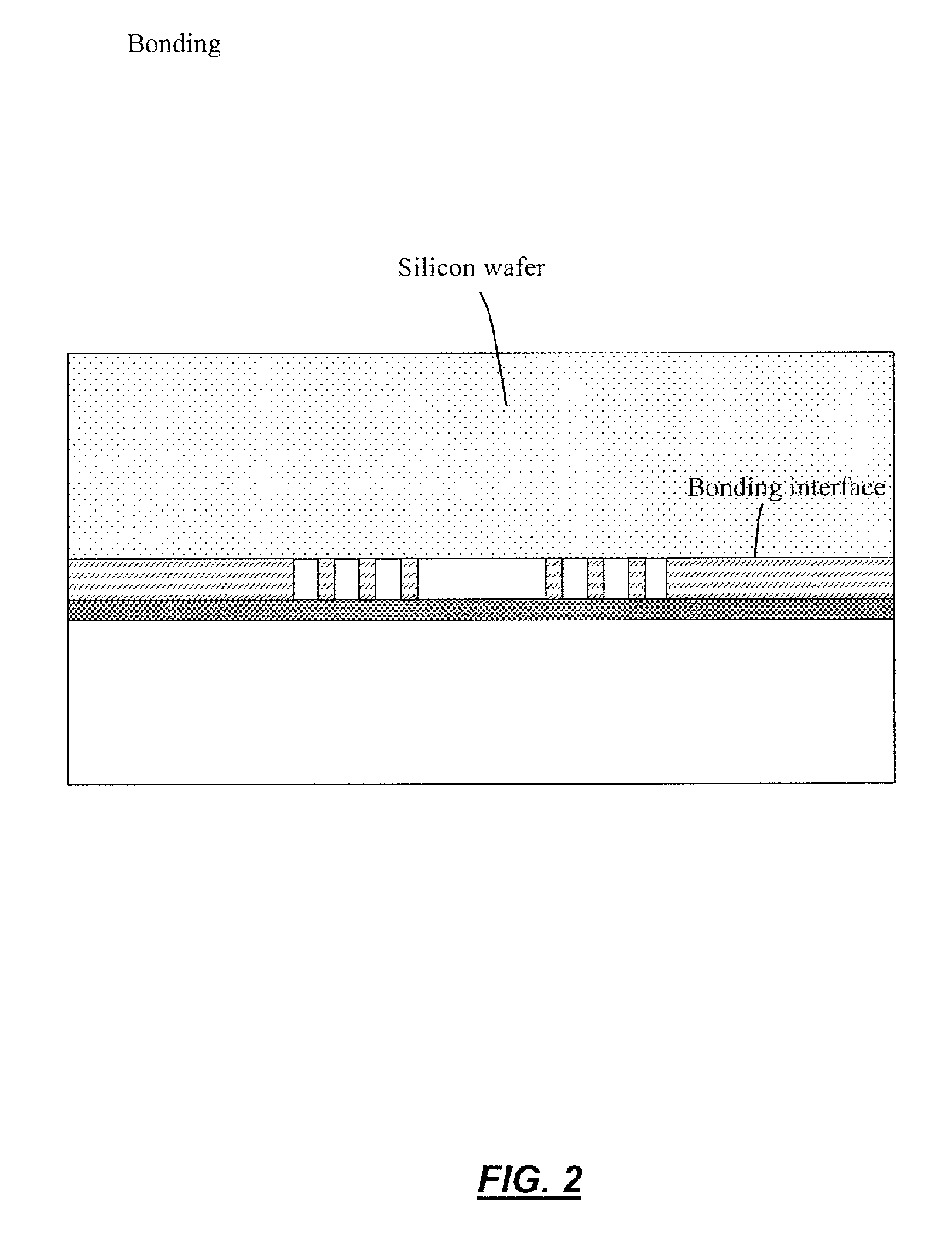Method and structure of monolithetically integrated inertial sensor using IC foundry-compatible processes
a technology of inertial sensor and monolithecene, which is applied in the direction of microelectromechanical systems, microelectromechanical sensors, semiconductor devices, etc., can solve the problems of limited integration level of mems and cmos, difficult scaling and leverage of capacity and capacity of ic foundries, and superior performance of micromachined sensors. , the effect of reducing parasitics and reducing the size of the chip
- Summary
- Abstract
- Description
- Claims
- Application Information
AI Technical Summary
Benefits of technology
Problems solved by technology
Method used
Image
Examples
Embodiment Construction
[0030]FIG. 1 is a simplified cross section diagram of components of a starting CMOS substrate according to one embodiment of the present invention. As depicted, the starting substrate is a fully processed CMOS wafer. A dielectric layer such as oxide and nitride is deposited on top of a top metal layer of the CMOS wafer. The dielectric layer is then patterned to form a structure that provides anchor points for stationary members of the mechanical sensing device.
[0031]FIG. 2 is a simplified cross section diagram of components of a monolithically integrated inertial sensing device according to one embodiment of the present invention. As depicted, a silicon wafer is bonded to the CMOS substrate. The bonding methods include but not limited to: covalent, Sprin-on-glass (SOG), Eutectic, and anodic. The bonding temperature is CMOS compatible and below 400 C.
[0032]FIG. 3 is a simplified cross section diagram of components of a monolithically integrated inertial sensing device according to on...
PUM
 Login to View More
Login to View More Abstract
Description
Claims
Application Information
 Login to View More
Login to View More - R&D
- Intellectual Property
- Life Sciences
- Materials
- Tech Scout
- Unparalleled Data Quality
- Higher Quality Content
- 60% Fewer Hallucinations
Browse by: Latest US Patents, China's latest patents, Technical Efficacy Thesaurus, Application Domain, Technology Topic, Popular Technical Reports.
© 2025 PatSnap. All rights reserved.Legal|Privacy policy|Modern Slavery Act Transparency Statement|Sitemap|About US| Contact US: help@patsnap.com



